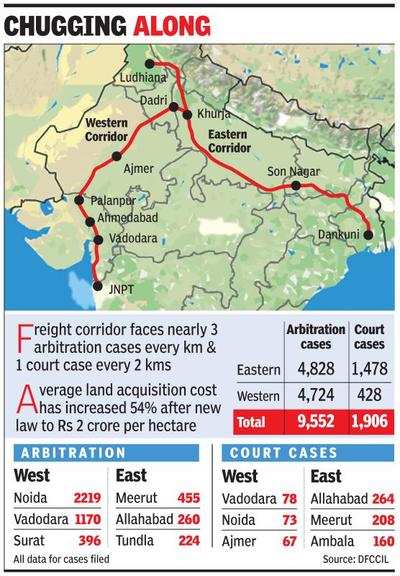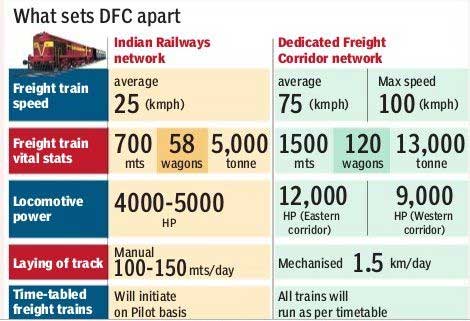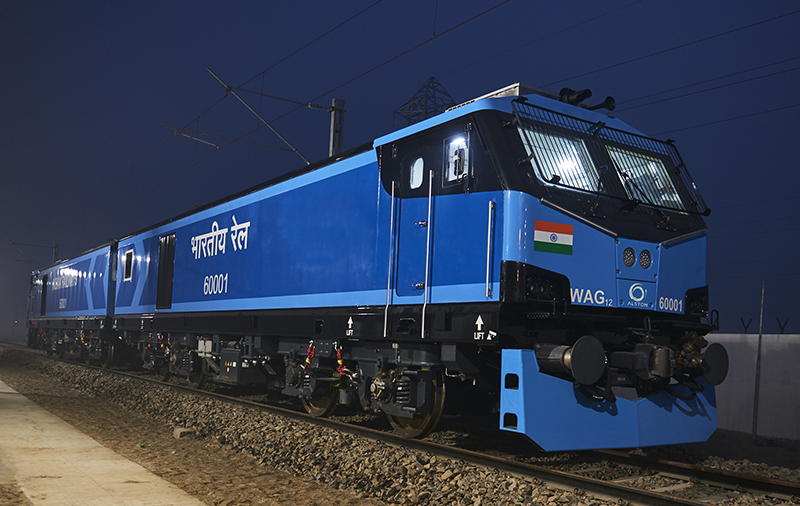Dedicated Freight Corridor To Be Complete By 2019: Indian Railways
New Delhi: The Indian Railways today said that the work on the dedicated freight corridor will be completed by the end of 2019, which will result in enhanced profits and punctuality.
"The work on the dedicated freight corridor is on fast track and it is expected to be complete by December 2019," Railway Board Chairman A.K. Mital said while speaking at the Economic Editors' Conference 2016.
"Once the dedicated freight corridor work is complete, it shall prove to be a 'game changer' for the railways."
He told the conference that Ministry of Railways has finalised contracts worth Rs. 35,000 crore for the dedicated freight corridor.
On punctuality enhancement, Mr Mital predicted that By 2020, the punctuality rate will reach 95 per cent. Currently, only 80 per cent of trains in India run on time.
Emphasising the need to increase the speed of the trains, he said: "After launching the Gatimaan Express earlier this year, we are also working to enhance the speed of all Express trains on the Diamond Quadrilateral High Speed Rail Network."
"Feasibility studies of Delhi-Mumbai, Delhi-Kolkata and Mumbai-Chennai are underway."
Currently, the average speed of freight trains in India is about 25 km per hour, while that of average Express train is in the range of 50-55 km per hour.
"After the completion of the work on these tracks the average speed of the Express trains would go up to 75 kmph, with maximum speed of 100 kmph, while the average speed of the goods train would improve to 50 kmph," the Railway Board Chairman said.
Mr Mital elaborated that the railways, which spends about Rs. 30,000 crore per year on its energy requirements, will try and bring this cost down by 10 per cent.
"Every year, we spend Rs. 30,000 crore on energy expenses, and now we are trying to make savings on the energy bill, we are targetting to reduce the energy bill by 10 per cent currently (not on diesel part but on electricity part)," Mr Mital said.
"We have asked all the states to give us NOCs to procure cheaper power from wherever it is available in the states."
The Indian Railways spends about Rs. 18,000 crore on diesel, and Rs. 12,000 crore on electricity bill.
Emphasising the projects undertaken by the railways in the northeastern states, Mr Mital said: "By the end of this fiscal year (2016-17), all the metre guage tracks will be converted to broad guage in the northeastern states."
"By 2020, we would connect all the northeastern states' capital cities with railways."
He said that railway tracks will become human waste free from 2019 and that unmanned railway crossings will be eliminated in the next four to five years.
Mr Mital pointed out that lack of investment in infrastructure erection had stalled railway's modernisation.
"In the last few decades, we didn't invest much in the railways, due to which the modernisation of infrastructure and upgradation of the railway tracks didn't take place," he said.
"But now there has been a paradigm shift," Mr Mittal said, and added that extra budgetary resources such as loans and bonds have been utilised for infrastructure creation.
On an annual basis, the Indian Railways ferry about 800 crore passengers and three lakh metric tonnes of freight.
Dedicated Freight Corridor To Be Complete By 2019: Indian Railways
New Delhi: The Indian Railways today said that the work on the dedicated freight corridor will be completed by the end of 2019, which will result in enhanced profits and punctuality.
"The work on the dedicated freight corridor is on fast track and it is expected to be complete by December 2019," Railway Board Chairman A.K. Mital said while speaking at the Economic Editors' Conference 2016.
"Once the dedicated freight corridor work is complete, it shall prove to be a 'game changer' for the railways."
He told the conference that Ministry of Railways has finalised contracts worth Rs. 35,000 crore for the dedicated freight corridor.
On punctuality enhancement, Mr Mital predicted that By 2020, the punctuality rate will reach 95 per cent. Currently, only 80 per cent of trains in India run on time.
Emphasising the need to increase the speed of the trains, he said: "After launching the Gatimaan Express earlier this year, we are also working to enhance the speed of all Express trains on the Diamond Quadrilateral High Speed Rail Network."
"Feasibility studies of Delhi-Mumbai, Delhi-Kolkata and Mumbai-Chennai are underway."
Currently, the average speed of freight trains in India is about 25 km per hour, while that of average Express train is in the range of 50-55 km per hour.
"After the completion of the work on these tracks the average speed of the Express trains would go up to 75 kmph, with maximum speed of 100 kmph, while the average speed of the goods train would improve to 50 kmph," the Railway Board Chairman said.
Mr Mital elaborated that the railways, which spends about Rs. 30,000 crore per year on its energy requirements, will try and bring this cost down by 10 per cent.
"Every year, we spend Rs. 30,000 crore on energy expenses, and now we are trying to make savings on the energy bill, we are targetting to reduce the energy bill by 10 per cent currently (not on diesel part but on electricity part)," Mr Mital said.
"We have asked all the states to give us NOCs to procure cheaper power from wherever it is available in the states."
The Indian Railways spends about Rs. 18,000 crore on diesel, and Rs. 12,000 crore on electricity bill.
Emphasising the projects undertaken by the railways in the northeastern states, Mr Mital said: "By the end of this fiscal year (2016-17), all the metre guage tracks will be converted to broad guage in the northeastern states."
"By 2020, we would connect all the northeastern states' capital cities with railways."
He said that railway tracks will become human waste free from 2019 and that unmanned railway crossings will be eliminated in the next four to five years.
Mr Mital pointed out that lack of investment in infrastructure erection had stalled railway's modernisation.
"In the last few decades, we didn't invest much in the railways, due to which the modernisation of infrastructure and upgradation of the railway tracks didn't take place," he said.
"But now there has been a paradigm shift," Mr Mittal said, and added that extra budgetary resources such as loans and bonds have been utilised for infrastructure creation.
On an annual basis, the Indian Railways ferry about 800 crore passengers and three lakh metric tonnes of freight.
Dedicated Freight Corridor To Be Complete By 2019: Indian Railways










